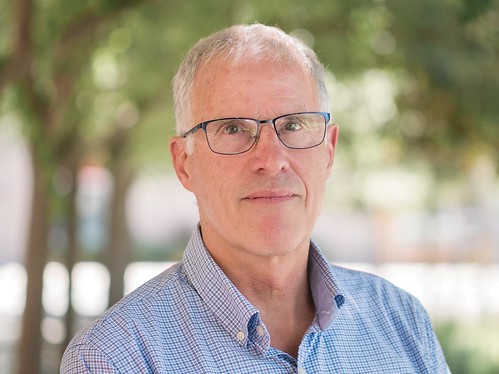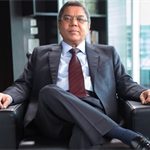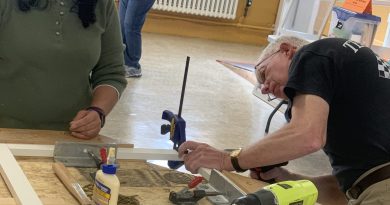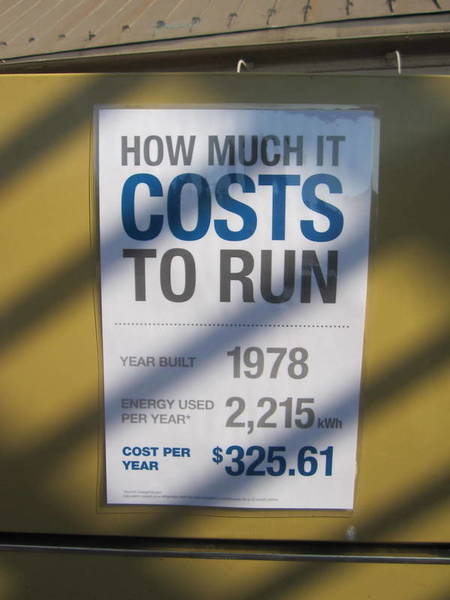[Article] Celebrating Our Founder
Energy Disrupter
For nearly 20 years, Alan Meier and I have had on one level a typical editor/author relationship. I bug him about writing the next editorial for Home Energy, and he procrastinates until the last minute. Maggie Forti, director of advertising, who has been at the magazine just as long as I have, put it this way, quoting Alan himself: “I’ll get back to you.” “I’m working on it.” “There’s candy in the drawer.” (There always was.)
But on another level, I’ve been privileged to relate to Alan as a colleague and friend; during the hours spent in his office at Building 90 on the campus of DOE’s Lawrence Berkeley National Lab (LBNL) being educated in all things energy efficiency; sitting down to a meal at the cafeteria in Asilomar during ACEEE’s Summer Study, talking policy with the experts; and visiting Alan and his family in Paris while Alan was working for the International Energy Agency. Even when I was a newbie in the energy efficiency world, I felt like I was an important member of a team of energy nerds. I think everyone who has been on the magazine staff over the years could say the same. I’m very, very grateful for that.

Alan’s vision, intelligence, humor, and search for meaning in the data inspired the birth of the magazine.
(Paul Fortunato)
After this Fall issue, Home Energy will be listing Alan Meier as Founder in the masthead of the magazine, and he will no longer be the main editorial writer. Alan has written his last editorial as Senior Executive Editor in this issue. We plan on enlisting many of the leaders in building performance to take on the job as editorialists. I hope that many of you who’ve subscribed to Home Energy just to read Alan’s quirky, relevant, thoughtful, challenging, and well-written editorials will still tune in. We expect him to make an appearance on our editorial page every now and then. (You can visit the Home Energy website and click on Departments and then Editorials to read all of Alan’s editorial gems going back to 1992. You don’t even have to subscribe to do it—they’re free.)
Alan and colleagues at LBNL founded the magazine under the title Energy Auditor & Retrofitter (EA&R) in 1984. It soon became Home Energy but has always been the place where “all the energy news is fit to print.” Alan is well known for his work on saving energy by lowering the standby energy use of electronic devices. At a meeting at the Bush (second one) White House with top scientists from DOE, he demonstrated the amount of standby electricity used by office equipment and other appliances. President Bush must have been impressed, because soon after he wrote up an Executive Order limiting the standby power of all the electronic devices purchased by the federal government to 2 watts. Alan is also well known for reducing electricity load in a hurry. When an avalanche cut off the supply of cheap hydropower in Juneau, Alaska, in 2008, the city sought out Alan’s help. Juneau’s electricity use dropped by 30% in a few weeks, much of that having to do with energy savings for lighting and heating.

Home Energy‘s 30th anniversary and inaugural issues.
Alan has many important connections with people at DOE in Washington, D.C., DOE national labs, UC Davis, the International Energy Agency, and countless nonprofits and organizations in Japan and all around the world. Most have been a part of Home Energy as research partners, authors, reviewers, and contributors since 1984. I wish we had space to hear from all of them, but here are a few.
Linda Wigington, a fellow home performance hero and founder of Affordable Comfort (now Building Performance Association), credits Alan with providing the name Affordable Comfort. He did a luncheon keynote on Thermal Comfort at the first Affordable Comfort Conference. “Alan’s work was the genesis of my conviction that how we address and adapt in order to achieve comfort is a major opportunity to promote more-efficient, healthier, and more-affordable housing.”
Steve Greenberg was an original staff member for EA&R and has continued to be a technical editor and advisor throughout the life of the magazine. “I first met Alan when I was an undergrad engineering student at Cal and took his Residential Energy Conservation class in 1980. Energy auditing was a very new thing then, and Alan and his colleagues at the Lawrence Berkeley Lab were pioneers. LBL (now officially the Lawrence Berkeley National Laboratory) had formerly been the Lawrence Radiation Laboratory, and many still referred to it as the ‘Rad Lab’. With radical ideas coming from LBL folks, like the economy could grow without proportionate growth in energy use, ‘Rad’ took on a different meaning.” Outside the office, Steve, Alan, and other friends have shared many long bike rides and hikes in the California wilds.

From the left, Carl Blumstein, director at California Institute for Energy and Environment (CIEE) and one of the founders of the magazine; Alan; and Steve Nadel, executive director of ACEEE, at the 2016 Summer Study. (Leslie Jackson)
Greg Thomas, founder and current CEO of Performance Systems Development, has been involved in building performance work for more than 30 years. He was chair of Efficiency First, and past president of ACI (now Building Performance Association), among other leadership positions. “Alan is very good at keeping his eye on the prize, which is reducing energy use at the meter. He was an energy myth buster before cable TV got there. He early on positioned Home Energy magazine to fill a role as the publication of record for residential energy efficiency. Creating journalistic content that inspires that type of trust has been an important contribution to the growth of the industry.”
“Alan has been an inspiration and example for how to think differently, work in several highly diverse areas at the same time, and get things done in a big way,” says Bruce Nordman, fellow research scientist at LBNL and, along with Alan, Steve Greenberg, and others, an outdoor adventure enthusiast.

Alan sitting outside an all-electric, net zero energy apartment complex in Davis, California. He wrote about the apartments in his May/June 2015 editorial. (Gene Ang)
Finally, here is a note from one more person who was with Home Energy from the beginning, Peter Dupont. “In January 1984, with a $6,000 grant in hand, Alan Meier hired a physics undergraduate (Randy McFarland), a young artist, and a public health masters student (me) to help him start a new magazine called Energy Auditor & Retrofitter. What a diverse and ragtag group! But he created an inspiring vision of getting reams of DOE and LBL technical reports and test results and data; packaging it in a practical, engaging, and visually appealing way, leavened with humor and cartoons; and making it extremely relevant to a community of thousands of building auditors, energy professionals, and energy officials across the country. Eight months later, against all odds, we came out with the first issue of the magazine, and we knew we were on to something. Alan’s vision, intelligence, humor, and search for meaning in the data inspired the birth of the magazine and have remained an inspiration for me during the 30 years since I left Berkeley and Home Energy to pursue a career working on energy efficiency and clean energy in Asia.”
Lest this go to Alan’s head, I’d better end it here. From all of us in the greater Home Energy family, our heartfelt thanks, Alan.














